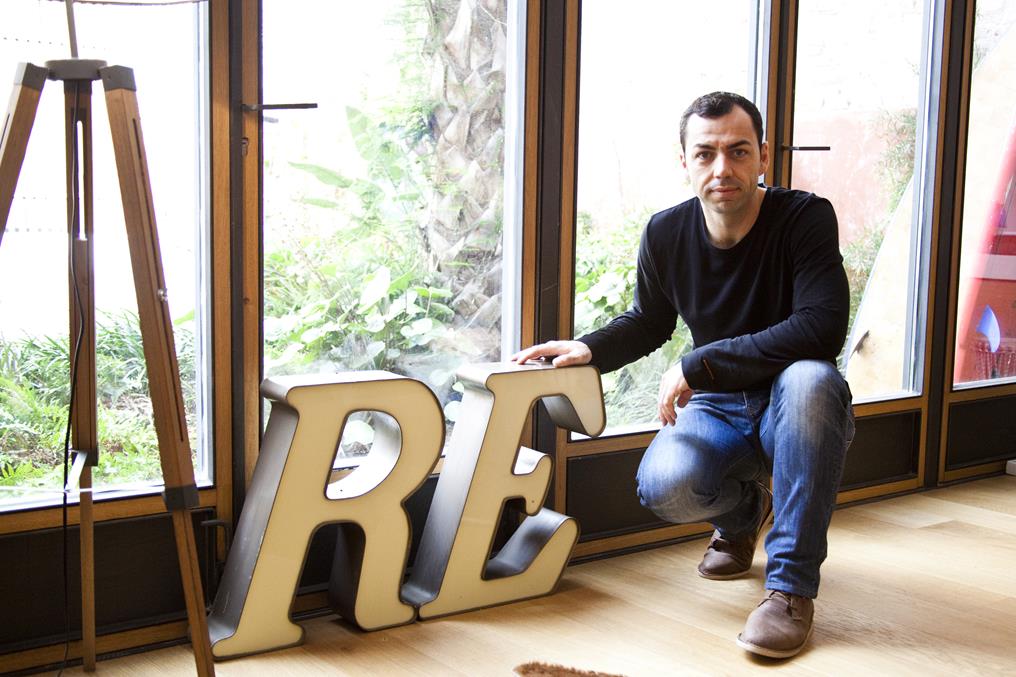 Xavier Vilalta is not your ordinary architect–if there is such a thing. Xavier’s passion for sustainable architecture that is respectful of cultures and beneficial to communities has taken him across the world, during which he has learned from traditional African design and Ethiopian culture, and onto the stage at TED. Check out our Q&A with him below, and be sure to watch his TED talk (linked below) as well.
What inspired you to start working in Sustainable Architecture?
Xavier Vilalta is not your ordinary architect–if there is such a thing. Xavier’s passion for sustainable architecture that is respectful of cultures and beneficial to communities has taken him across the world, during which he has learned from traditional African design and Ethiopian culture, and onto the stage at TED. Check out our Q&A with him below, and be sure to watch his TED talk (linked below) as well.
What inspired you to start working in Sustainable Architecture?
I spent part of my childhood with my family in the countryside of Catalonia, in the middle of apple trees. My grandfather taught me how to take care of them and influenced me with his passion for work and for the land. With him, I learned how to observe in order to improve your surroundings, taking advantage of the existing resources. I remember he used to tell me: “You have to stop, think, and then do.”
For me, this is sustainability, and I apply these principles in architecture: To transform the exiting conditions of the raw material to create something to better satisfy the present necessities, without compromising future generations.
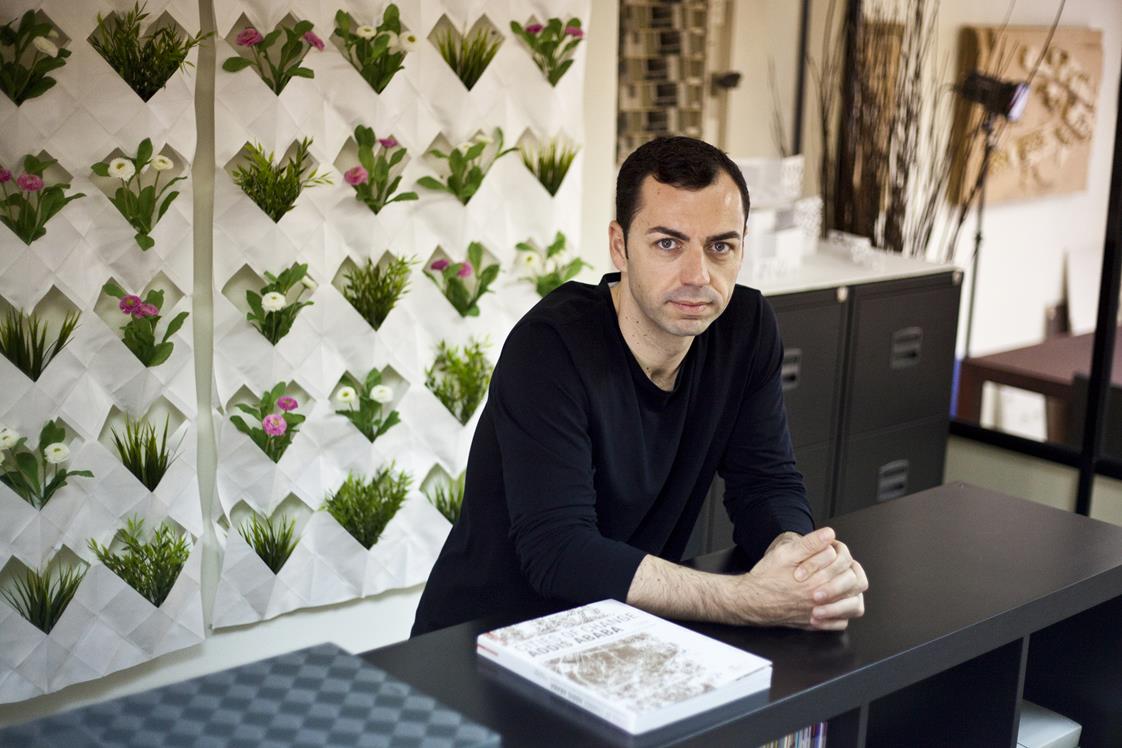
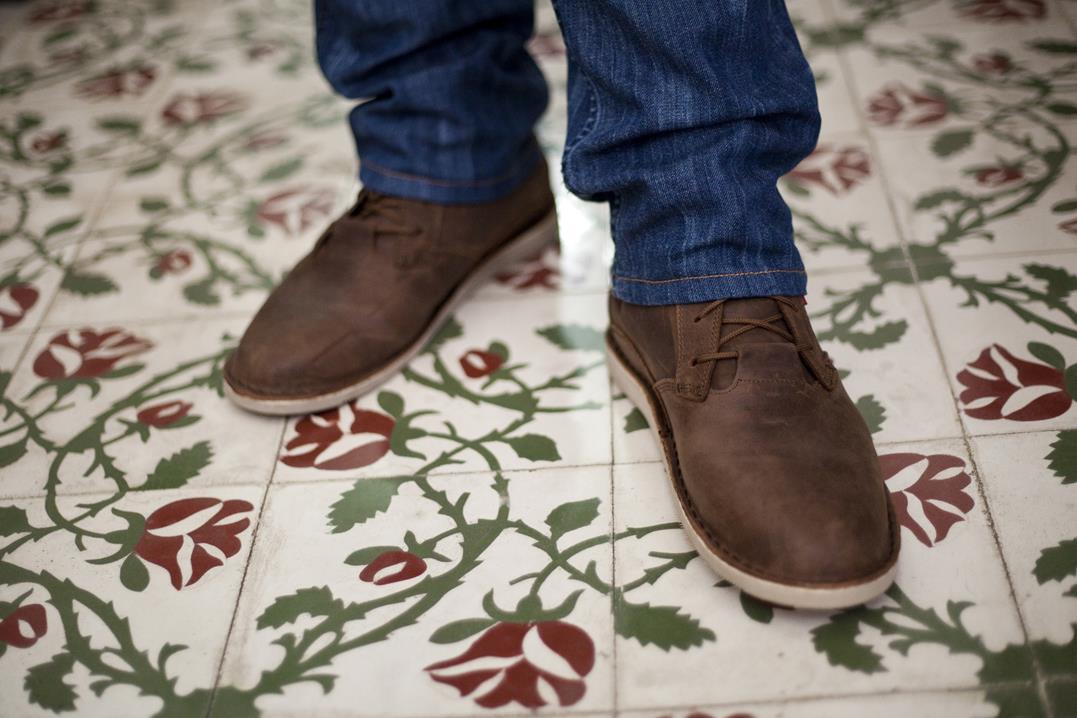 What is one of your favorite things about what you are doing?
What is one of your favorite things about what you are doing?
One of the most exciting moments of architecture’s creative process is researching the site of the project. I really enjoy analyzing the existing conditions of a place, its culture, and its traditional references, to find inputs that will make the project an essential part of it.
What has been one of your biggest struggles?
More than a struggle, it was a challenge to do my first project outside of Spain. One of my clients in Spain decided to develop a vocational school in the city of Mekelle, Ethiopia and invited me to go with him. I didn´t even blink my eyes before saying yes.
I had to start from scratch, learn again how to be an architect. I did a lot of research and I learnt about traditional African architecture and design and how it is based in the fractal scale. I would have never imagined I would be designing using fractals, the geometry of nature, which is in the DNA of African design.
This project made me look back to what I was doing previously. Being in a new environment, I had to question my own methodology and rediscover my own approach as an architect: to update traditional design principles to construct modern buildings that suit their environment.
 How would you say people could serve Ethiopia or greater Africa better?
How would you say people could serve Ethiopia or greater Africa better?
I would say something similar to what Nigeria Finance Minister Ngozi Okonjo-Iweala says: “Do you want to help Africa? Do business here!” I believe that Africa has a great future and we can improve it by working all together.
Besides that, Africans and people working in Africa should look more into the cultural knowledge they already have instead of trying to copy models from the West. When growing too fast, there is a risk of losing the identity of a place.
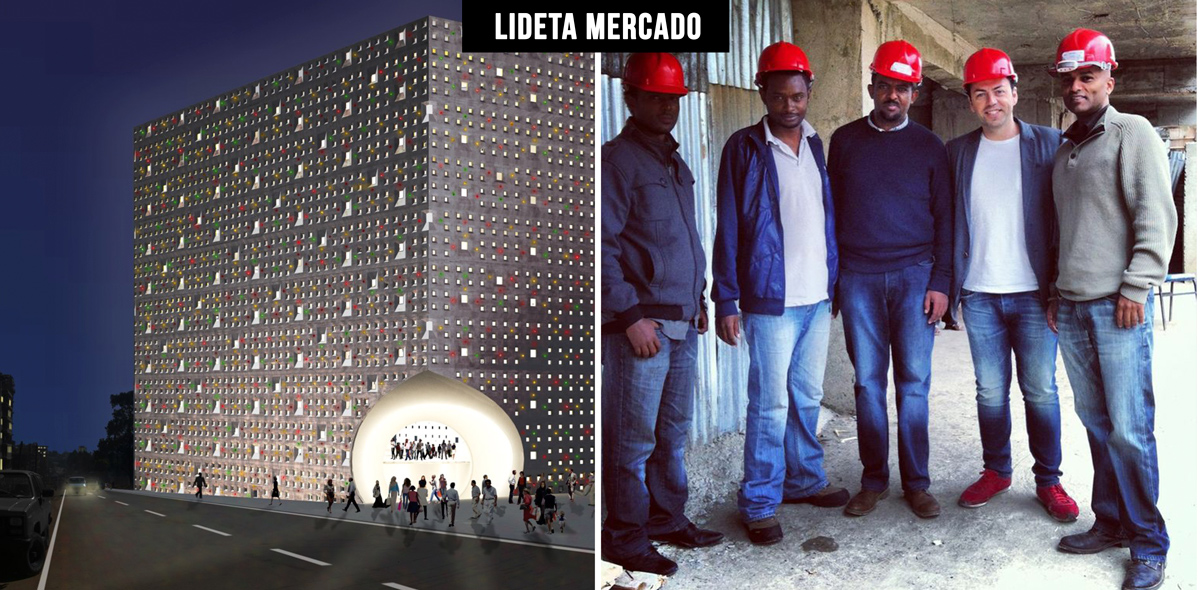 Do you have any examples of something specific in Ethiopia that made you see the success of Sustainable Architecture?
Do you have any examples of something specific in Ethiopia that made you see the success of Sustainable Architecture?
One of the projects that I am completing at the moment is a market in Addis Ababa. Initially, it was meant to be a shopping mall, but after analyzing the city and its context, we got inspired by the Old Mercato of the city in order to create a modern building adapted to the local possibilities.
We designed a façade made out of concrete with perforations that optimizes the city mild climate and protects from the sun. The perforations in the facade were shaped following the pattern from traditional Ethiopian dresses. It functions like a real fabric, protecting while allowing the building breathe.
Besides that, with this solution the building does not need any air conditioning and we were able to use part of the budget to add solar photovoltaic panels. This made the project self-sufficient, which is a huge asset for a building in a city where their electricity cuts almost every day!
One day I was at the construction site and I saw an old couple looking at the billboard where you can see how the building will look like when it is finished and then… something magic happened! The old man started pointing to the billboard and then to his wife’s dress, and both were smiling. In that moment, I understood that even people without architectural training could understand the whole point and feel it is theirs. For me, this is the highest success I have ever had as a designer of the built environment.
If you could have a one-on-one sit down with anyone for a conversation, who would it be?
I would like to have a very long conversation with Ethiopian model and social entrepreneur Liya Kebede. Her approach to preserve Ethiopian traditions, and her concern for and actions related to maternal and child health, totally resonate with my design vision and the type of projects I am involved with at the moment.
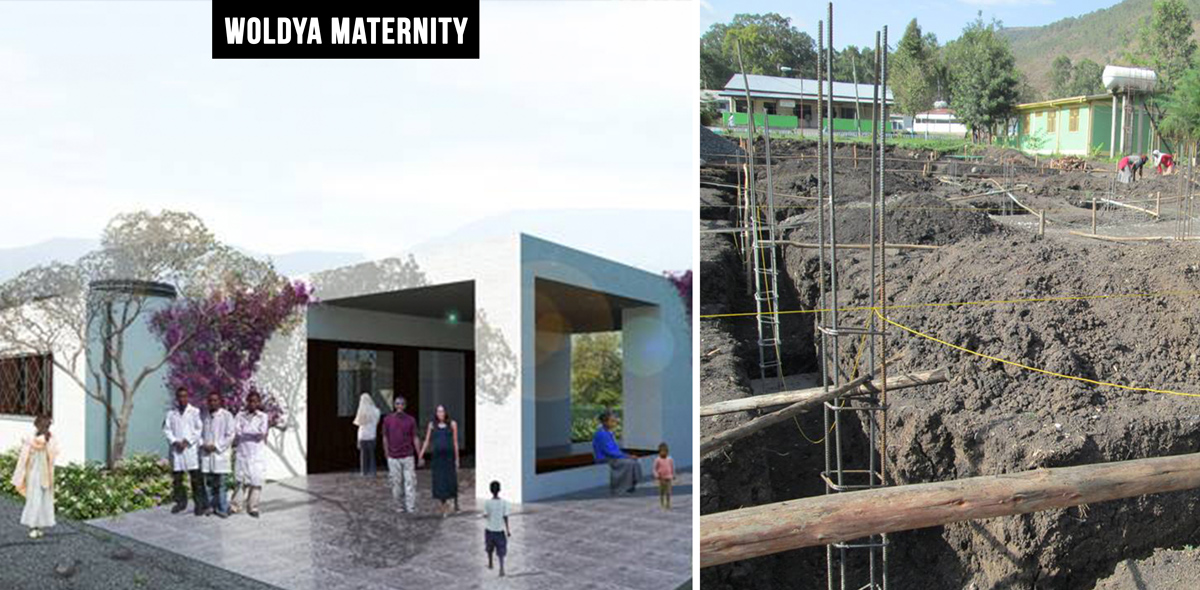 What’s something exciting we can expect to see from you soon?
What’s something exciting we can expect to see from you soon?
Two finished buildings in Ethiopia this year, the Mother’s home and Maternity and New Born Unit at the General Hospital of Woldyia and the Lideta Mercato in Addis Ababa. Besides that, I am looking forward to unveiling a new exciting project in the Spanish Pyrenees very soon.
What’s one of your favorite things about Ethiopia?
I like many things about Ethiopia, but overall, what amazes me most is its cultural richness. Ethiopia is one of the few African countries not recently freed from colonization, and they enjoyed a long independence. It is such a genuine place with a strong sense of identity, where you find in the everyday life authentic traditions.
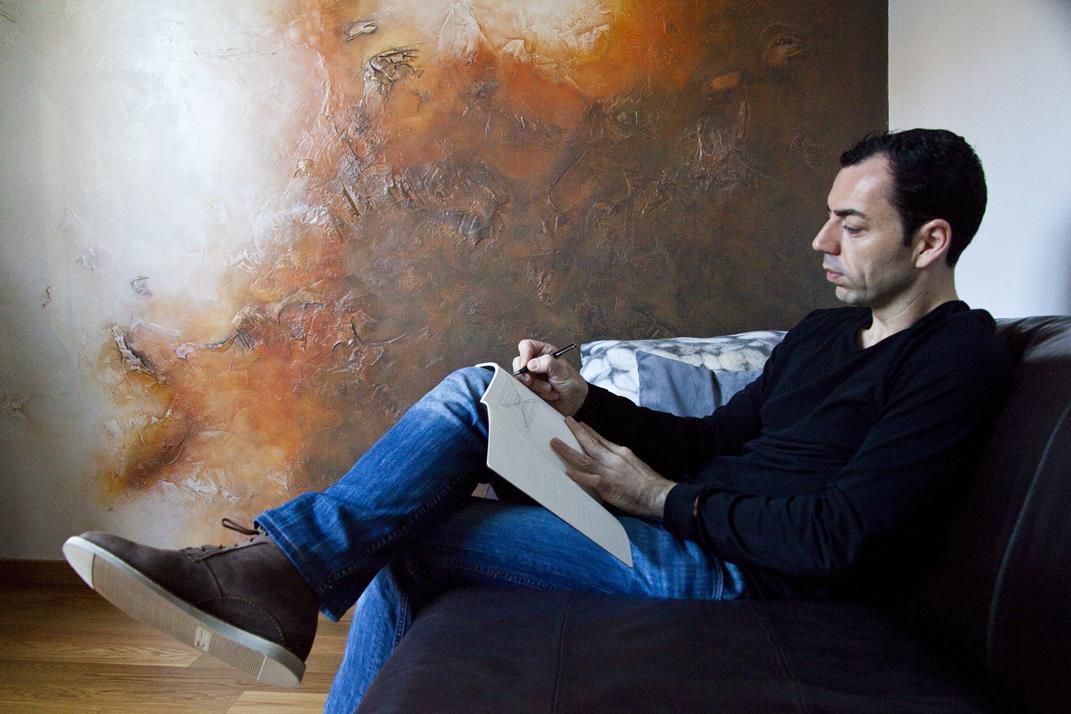 XAVIER’S TED TALK:
XAVIER’S TED TALK:
Photos by Tai Lomas
 Xavier Vilalta is not your ordinary architect–if there is such a thing. Xavier’s passion for sustainable architecture that is respectful of cultures and beneficial to communities has taken him across the world, during which he has learned from traditional African design and Ethiopian culture, and onto the stage at TED. Check out our Q&A with him below, and be sure to watch his TED talk (linked below) as well.
What inspired you to start working in Sustainable Architecture?
I spent part of my childhood with my family in the countryside of Catalonia, in the middle of apple trees. My grandfather taught me how to take care of them and influenced me with his passion for work and for the land. With him, I learned how to observe in order to improve your surroundings, taking advantage of the existing resources. I remember he used to tell me: “You have to stop, think, and then do.”
For me, this is sustainability, and I apply these principles in architecture: To transform the exiting conditions of the raw material to create something to better satisfy the present necessities, without compromising future generations.
Xavier Vilalta is not your ordinary architect–if there is such a thing. Xavier’s passion for sustainable architecture that is respectful of cultures and beneficial to communities has taken him across the world, during which he has learned from traditional African design and Ethiopian culture, and onto the stage at TED. Check out our Q&A with him below, and be sure to watch his TED talk (linked below) as well.
What inspired you to start working in Sustainable Architecture?
I spent part of my childhood with my family in the countryside of Catalonia, in the middle of apple trees. My grandfather taught me how to take care of them and influenced me with his passion for work and for the land. With him, I learned how to observe in order to improve your surroundings, taking advantage of the existing resources. I remember he used to tell me: “You have to stop, think, and then do.”
For me, this is sustainability, and I apply these principles in architecture: To transform the exiting conditions of the raw material to create something to better satisfy the present necessities, without compromising future generations.

 What is one of your favorite things about what you are doing?
One of the most exciting moments of architecture’s creative process is researching the site of the project. I really enjoy analyzing the existing conditions of a place, its culture, and its traditional references, to find inputs that will make the project an essential part of it.
What has been one of your biggest struggles?
More than a struggle, it was a challenge to do my first project outside of Spain. One of my clients in Spain decided to develop a vocational school in the city of Mekelle, Ethiopia and invited me to go with him. I didn´t even blink my eyes before saying yes.
I had to start from scratch, learn again how to be an architect. I did a lot of research and I learnt about traditional African architecture and design and how it is based in the fractal scale. I would have never imagined I would be designing using fractals, the geometry of nature, which is in the DNA of African design.
This project made me look back to what I was doing previously. Being in a new environment, I had to question my own methodology and rediscover my own approach as an architect: to update traditional design principles to construct modern buildings that suit their environment.
What is one of your favorite things about what you are doing?
One of the most exciting moments of architecture’s creative process is researching the site of the project. I really enjoy analyzing the existing conditions of a place, its culture, and its traditional references, to find inputs that will make the project an essential part of it.
What has been one of your biggest struggles?
More than a struggle, it was a challenge to do my first project outside of Spain. One of my clients in Spain decided to develop a vocational school in the city of Mekelle, Ethiopia and invited me to go with him. I didn´t even blink my eyes before saying yes.
I had to start from scratch, learn again how to be an architect. I did a lot of research and I learnt about traditional African architecture and design and how it is based in the fractal scale. I would have never imagined I would be designing using fractals, the geometry of nature, which is in the DNA of African design.
This project made me look back to what I was doing previously. Being in a new environment, I had to question my own methodology and rediscover my own approach as an architect: to update traditional design principles to construct modern buildings that suit their environment.
 How would you say people could serve Ethiopia or greater Africa better?
I would say something similar to what Nigeria Finance Minister Ngozi Okonjo-Iweala says: “Do you want to help Africa? Do business here!” I believe that Africa has a great future and we can improve it by working all together.
Besides that, Africans and people working in Africa should look more into the cultural knowledge they already have instead of trying to copy models from the West. When growing too fast, there is a risk of losing the identity of a place.
How would you say people could serve Ethiopia or greater Africa better?
I would say something similar to what Nigeria Finance Minister Ngozi Okonjo-Iweala says: “Do you want to help Africa? Do business here!” I believe that Africa has a great future and we can improve it by working all together.
Besides that, Africans and people working in Africa should look more into the cultural knowledge they already have instead of trying to copy models from the West. When growing too fast, there is a risk of losing the identity of a place.
 Do you have any examples of something specific in Ethiopia that made you see the success of Sustainable Architecture?
One of the projects that I am completing at the moment is a market in Addis Ababa. Initially, it was meant to be a shopping mall, but after analyzing the city and its context, we got inspired by the Old Mercato of the city in order to create a modern building adapted to the local possibilities.
We designed a façade made out of concrete with perforations that optimizes the city mild climate and protects from the sun. The perforations in the facade were shaped following the pattern from traditional Ethiopian dresses. It functions like a real fabric, protecting while allowing the building breathe.
Besides that, with this solution the building does not need any air conditioning and we were able to use part of the budget to add solar photovoltaic panels. This made the project self-sufficient, which is a huge asset for a building in a city where their electricity cuts almost every day!
One day I was at the construction site and I saw an old couple looking at the billboard where you can see how the building will look like when it is finished and then… something magic happened! The old man started pointing to the billboard and then to his wife’s dress, and both were smiling. In that moment, I understood that even people without architectural training could understand the whole point and feel it is theirs. For me, this is the highest success I have ever had as a designer of the built environment.
If you could have a one-on-one sit down with anyone for a conversation, who would it be?
I would like to have a very long conversation with Ethiopian model and social entrepreneur Liya Kebede. Her approach to preserve Ethiopian traditions, and her concern for and actions related to maternal and child health, totally resonate with my design vision and the type of projects I am involved with at the moment.
Do you have any examples of something specific in Ethiopia that made you see the success of Sustainable Architecture?
One of the projects that I am completing at the moment is a market in Addis Ababa. Initially, it was meant to be a shopping mall, but after analyzing the city and its context, we got inspired by the Old Mercato of the city in order to create a modern building adapted to the local possibilities.
We designed a façade made out of concrete with perforations that optimizes the city mild climate and protects from the sun. The perforations in the facade were shaped following the pattern from traditional Ethiopian dresses. It functions like a real fabric, protecting while allowing the building breathe.
Besides that, with this solution the building does not need any air conditioning and we were able to use part of the budget to add solar photovoltaic panels. This made the project self-sufficient, which is a huge asset for a building in a city where their electricity cuts almost every day!
One day I was at the construction site and I saw an old couple looking at the billboard where you can see how the building will look like when it is finished and then… something magic happened! The old man started pointing to the billboard and then to his wife’s dress, and both were smiling. In that moment, I understood that even people without architectural training could understand the whole point and feel it is theirs. For me, this is the highest success I have ever had as a designer of the built environment.
If you could have a one-on-one sit down with anyone for a conversation, who would it be?
I would like to have a very long conversation with Ethiopian model and social entrepreneur Liya Kebede. Her approach to preserve Ethiopian traditions, and her concern for and actions related to maternal and child health, totally resonate with my design vision and the type of projects I am involved with at the moment.
 What’s something exciting we can expect to see from you soon?
Two finished buildings in Ethiopia this year, the Mother’s home and Maternity and New Born Unit at the General Hospital of Woldyia and the Lideta Mercato in Addis Ababa. Besides that, I am looking forward to unveiling a new exciting project in the Spanish Pyrenees very soon.
What’s one of your favorite things about Ethiopia?
I like many things about Ethiopia, but overall, what amazes me most is its cultural richness. Ethiopia is one of the few African countries not recently freed from colonization, and they enjoyed a long independence. It is such a genuine place with a strong sense of identity, where you find in the everyday life authentic traditions.
What’s something exciting we can expect to see from you soon?
Two finished buildings in Ethiopia this year, the Mother’s home and Maternity and New Born Unit at the General Hospital of Woldyia and the Lideta Mercato in Addis Ababa. Besides that, I am looking forward to unveiling a new exciting project in the Spanish Pyrenees very soon.
What’s one of your favorite things about Ethiopia?
I like many things about Ethiopia, but overall, what amazes me most is its cultural richness. Ethiopia is one of the few African countries not recently freed from colonization, and they enjoyed a long independence. It is such a genuine place with a strong sense of identity, where you find in the everyday life authentic traditions.
 XAVIER’S TED TALK:
XAVIER’S TED TALK:





